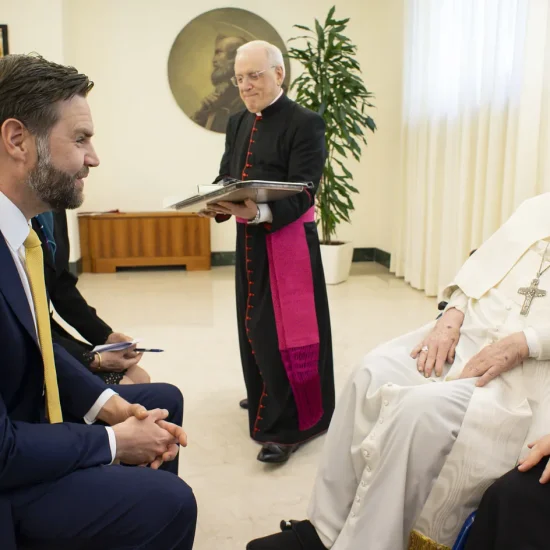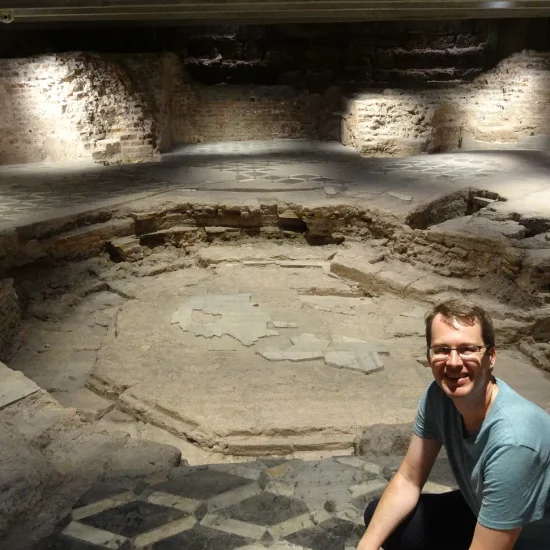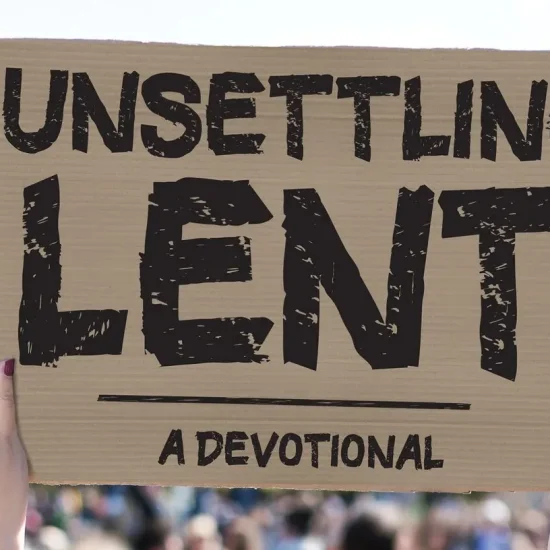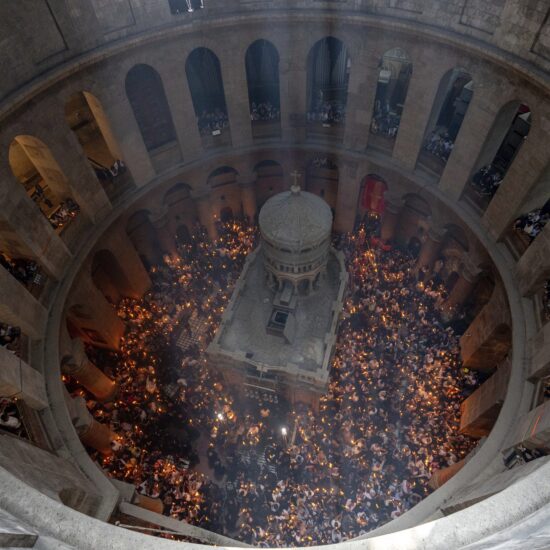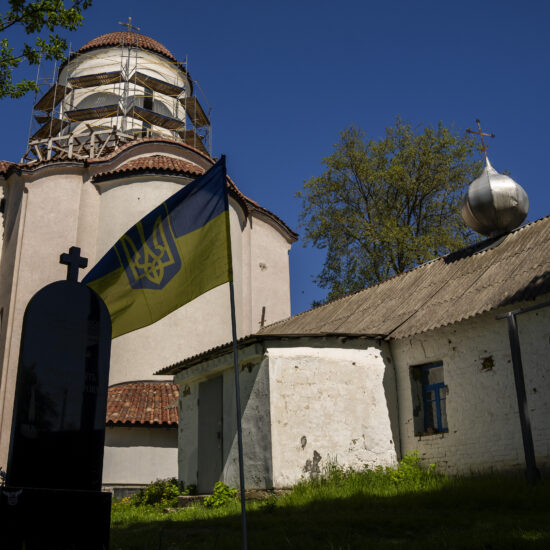
 I Have Seen the Lord!
I Have Seen the Lord!
Formations: April 12, 2020
Scripture: John 20:1-9, 11-18
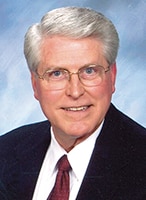
Michael K Olmsted
Have you experienced “the darkness”? You know, like when the doctor came into your mother’s room and said, “I’m so sorry, it’s pancreatic cancer and it’s so advanced there is nothing we can do.” Or, “Your dad’s kidney failure is irreversible … it’s only a matter of time.” Or, “Your wife has dementia and there is no cure, and the decline will continue at an unpredictable pace.”
Those “Friday” predictions offer no Easter Sunday hope or joy unless you know about Jesus.
John, the “beloved disciple,” tells it straight. Jesus’ closest disciples could not see beyond the horror of the cross, until a woman named Mary Magdalene announced “I have seen the Lord” (v. 18). The Apostle Paul, formerly a Pharisee and militant enemy of Christians, became a leading missionary for Christ and wrote: “Just as Christ was raised from the dead by the glory of the Father, so we too might walk in newness of life” (Romans 6:4).
Keep in mind, the resurrection occurs during the highest holy days of Passover, which is all about God’s miraculous deliverance of the Hebrews from the darkness of slavery in Egypt. Now add to that the fact that Jesus was crucified and hurriedly buried on Friday evening, before Sabbath began at sunset, and he arose from the grave early Sunday morning, at the close of Sabbath. The Jews counted days, not by 24 hours, but by sunrise and sunset, thus Friday through Sunday was considered three days.
If we put ourselves in the apostles’ shoes, given the trauma of Passover week and the inconceivable image of the cross, we should not be surprised that Jesus’ followers could not see beyond the tomb. Mary’s first report to the demoralized disciples did not speak of resurrection but “They have taken the Lord out of the tomb, and we do not know where they have laid him” (v. 2).
Looking back over 50+ years as a pastor, I have to admit that the death of a loved one or dear church member always cut deep into my heart. Though I knew the right verses to quote and the right things to say, I needed to pray and read stories like today’s text to stay on track and remember exactly what Christ endured and overcame for us all. Resurrection is not a date on the calendar called Easter; it is God’s promise become real in Jesus.
John uses the concept of darkness throughout his gospel because he knows the cruelty and injustice of this world and he knows the power of God’s light. Jesus said: “I am the light of the world. Whoever follows me will never walk in darkness, but will have the light of life” (John 8:12). The “beloved disciple” tells us Mary went to the tomb as early in the morning as she could, discovered the stone rolled away from the chamber opening and Jesus’ body missing.
She ran to tell Peter and an unnamed apostle (most likely John). The two disciples rushed to the tomb and Mary was probably right behind them. Peter’s reaction is to return to the other disciples (v. 10). The “beloved disciple” also returns to the city, but not before he sees and believes Jesus has risen (v. 8). The grieving Mary stays behind (v. 11). But neither disciple really understood what the scripture meant “that he (Jesus) must raise from the dead” (v. 9). The next time we see the disciples they are hiding in a locked room in Jerusalem, fearing the authorities (20:19).
Alone again at the empty tomb, Mary wept, believing someone had removed Jesus’ body. It would not be strange to believe the authorities would make sure there was nothing for those deluded followers of Jesus to use for their advantage!

Photo by Aaron Burden on Unsplash
In her stunned mental state, her vision blurred by tears, “two angels in white appeared sitting where the body of Jesus had been lying, one at the head and one at the foot” of the burial shelf. But Mary was still lost in her grief. She was still looking for a dead Jesus and did not recognize the risen Jesus now standing before her. Was he a gardener who cared for the cemetery?
It was the voice of Jesus speaking her name that finally broke through her overwhelming grief … “Mary” … and she knew! She knew beyond any question as she responded with the Hebrew word for a beloved teacher: “Rabbouni!” (v. 16). In a story crowded by doubt and fear, John captures the astonishment and incredulous joy of that grieving woman who knows the promise of God’s love is not merely a theological truth but the essence of life.
In New Testament times a woman was not allowed to give testimony in court, so it is surprising that John features Mary at the center of his resurrection narrative. Mary is the primary witness to the disciples. She is the one who discovered the empty tomb, she converses with the two angels at the tomb, and she shares the ultimate expression of God’s love and grace for all the world.
Perhaps Jesus’ question to the weeping Mary confronts us all: “Whom are you looking for?” (v. 15). We live in a world of darkness: immorality and selfishness, disasters, illness, violence, racism, poverty, a world of despair and death.
What answers the longings of the human heart? Politicians have no clue. Money and power leave us struggling in the darkness. Organized religion and well-ordered philosophers offer only temporary relief for our emptiness. God’s love, forgiveness, and companionship in life seems so remote, so far beyond all we know, so out of our control. But outside the walls of Jerusalem 2,000 years ago, in the aftermath of the horrible crucifixion of a man who embodied the love and grace of God, there was a woman named Mary. Her tears become our tears. She witnessed the miracle of Jesus, the Son of God, who arose from the grave to welcome us all into the family of God.
With our churches vacant in this oddest of Easters, we miss the joyous music, the lilies that would fill the church, the fun of the children at their Easter egg hunt, and the family dinner. But we don’t have to miss the best part. There is no body in the grave! There is the gift of God, his only begotten Son standing at the threshold of eternity with open arms, inviting you to leave the darkness behind and live in the embrace of God’s love. Like Mary Magdalene let us say to the world, “I have seen the Lord!”
Formations is a curriculum series from Smyth & Helwys Publishing, Inc. through NextSunday Resources.
The PDF download requires the free Acrobat Reader program. It can be downloaded and installed at https://get.adobe.com/reader (uncheck optional offers first).

